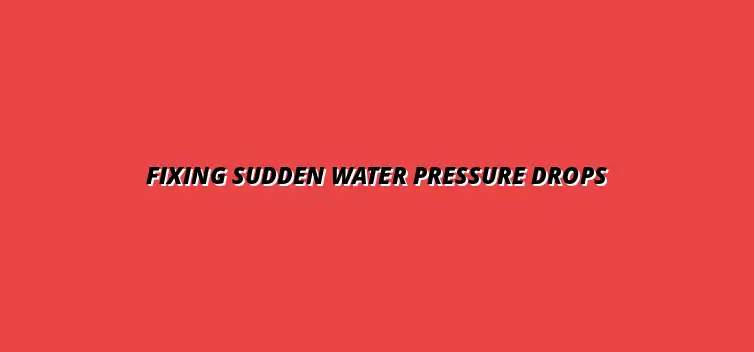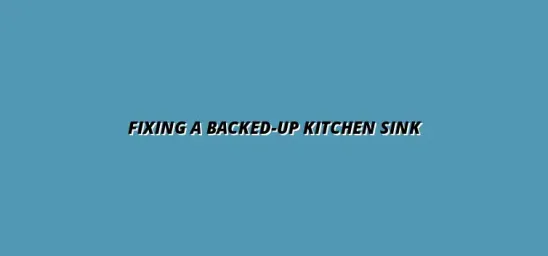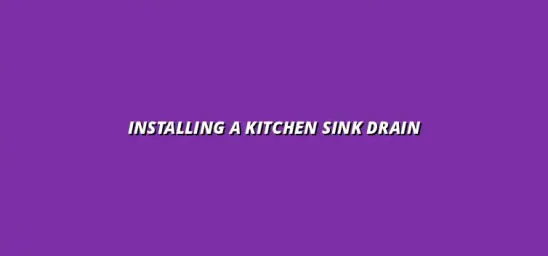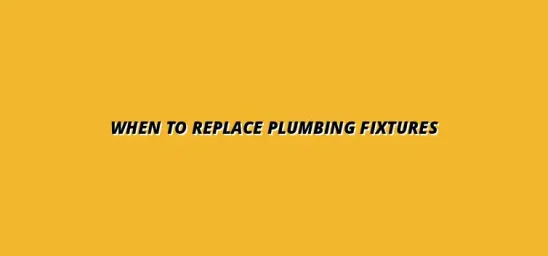
Fixing Sudden Water Pressure Drops
Understanding Sudden Drops in Water Pressure
Have you ever turned on the tap and noticed a surprising lack of water flow? Sudden drops in water pressure can be frustrating and inconvenient. In this section, we'll explore what water pressure is, why it matters, and some common reasons why you might experience a sudden drop.
Defining Water Pressure and Its Importance
What is Water Pressure?
Water pressure refers to the force that pushes water through your plumbing system. It's typically measured in pounds per square inch (PSI). Understanding your water pressure is crucial, as it can affect everything from showering to washing dishes!
In simple terms, think of water pressure as the power behind the water coming from your taps. If the pressure is too low, it can feel like a trickle, which makes everyday tasks take much longer. On the flip side, excessive pressure can cause wear and tear on your plumbing.
The Role of Water Pressure in Daily Life
Water pressure plays a vital role in our everyday activities. Whether you're brushing your teeth or doing laundry, adequate pressure ensures that you have a smooth and efficient experience. High-pressure water can help rinse soap off quickly, while low pressure can make tasks feel tedious.
- Filling up your bathtub or sink.
- Running appliances like dishwashers and washing machines.
- Watering your garden or lawn effectively.
When you have the right water pressure, life feels a bit easier. Conversely, when there’s an issue, it can disrupt your routine and leave you frustrated. Regular maintenance, such as following an annual plumbing maintenance checklist, can help prevent many problems.
Common Causes of Sudden Drops in Water Pressure
Municipal Supply Issues
Sometimes, the problem isn’t within your home, but rather with the municipal water supply. Local water authorities may experience issues such as maintenance work or supply shortages, which can lead to sudden drops in pressure. This can be particularly frustrating if you're not aware that the issue is outside your control!
Keep an eye out for notices from your local water department. They often provide updates about any potential supply problems that could impact your service.
Pipe Leaks and Breaks
Another common culprit for low water pressure is leaks or breaks in your pipes. These issues can occur due to age, weather conditions, or even outside construction work. When water is escaping before it reaches your faucet, it can create a noticeable drop in pressure.
- Listen for unusual sounds like hissing or dripping.
- Check for damp spots on walls or floors.
- Monitor your water bill for sudden increases.
Identifying these leaks early can save you time and money in repairs down the line! If you suspect a problem with your kitchen sink, learn how to fix kitchen sink water pressure issues.
Clogged Pipes and Fixtures
Sometimes, low water pressure can be traced back to clogged pipes or fixtures. Over time, mineral buildup, hair, and soap scum can accumulate, restricting water flow. This is especially common in showerheads and faucets, where you might notice a decrease in performance. A clogged bathroom drain can also significantly impact water pressure; learn how to unclog your bathroom drain easily.
Regular maintenance, like cleaning your fixtures, can help combat this issue. Keeping an eye on your plumbing's cleanliness can ensure that you enjoy consistent water pressure!
Faulty Pressure Regulators
If your home has a pressure regulator, it could be malfunctioning. These devices help maintain a steady water pressure in your plumbing system. When they fail, it can lead to unexpected drops in pressure. Low water pressure in your water heater is a specific issue you can learn to address by checking out our guide on fixing low water pressure in heaters.
- Check if the regulator is adjustable or needs replacement.
- Consult a professional if you're unsure about testing it yourself.
Addressing a faulty pressure regulator can restore your water pressure to its normal levels, making daily tasks more manageable!
Addressing Common Questions About Sudden Water Pressure Drops
Experiencing low water pressure can be frustrating and concerning. When you first notice it, you probably have a lot of questions. Understanding what steps to take and whether the issue is serious can help you respond effectively.
To ease your mind, let’s explore some of the most common questions people have when dealing with sudden drops in water pressure. By gathering the right information, you can decide on the best actions to take!
What Should You Do First When You Notice Low Water Pressure?
When low water pressure hits, the first thing you should do is stay calm. While it might feel like a major issue, many fixes can be simple. Here are some immediate actions you can take:
- Check other faucets in your home to see if the issue is widespread.
- Inspect your home for any visible leaks around pipes, fixtures, and appliances.
- Look for any recent construction or road work in your neighborhood that might affect the municipal supply.
- Turn off appliances that use water, like washing machines or dishwashers, to see if that changes the pressure.
By following these steps, you can begin to pinpoint the source of the problem and determine how severe it might be. If the issue persists after these checks, you might need to take further action. For bathroom-related pressure problems, consider preventative measures by reading our advice on how to prevent bathroom water pressure problems.
Could Low Water Pressure Indicate a More Serious Problem?
Low water pressure can sometimes signal a more significant issue that needs attention. It’s important to know when to be concerned. Here are some indicators that it might be time to investigate further:
- If the pressure drop is sudden and severe, it might be due to a major pipe break.
- Consistent low pressure could indicate a clog building up in your plumbing system.
- If only certain fixtures are affected, it may point to localized issues, like a faulty faucet.
- Strange noises in your plumbing could suggest air trapped in the pipes or other complications.
Recognizing these signs can help you decide whether it’s a minor inconvenience or a problem that requires professional attention. For serious issues, consider contacting a plumber in Great Barr, Birmingham.
Final Thoughts on Managing Water Pressure Drops
Managing sudden drops in water pressure doesn’t have to be overwhelming. By taking the proper steps, you can identify and address the issue effectively. Here’s a quick recap of the key actions to take when facing low water pressure.
Recap of Key Steps to Take
In summary, dealing with low water pressure involves a few essential steps:
- Check other faucets to gauge the extent of the issue.
- Inspect for leaks and recent municipal work.
- Take note of any unusual noises or signs that may indicate a more serious problem.
- Contact a plumber if the problem persists after your investigation.
By following these steps, you can get a clearer picture of your water pressure situation. Remember to prevent kitchen sink blockages by following simple steps outlined in our guide on how to prevent kitchen sink blockages easily.
Encouragement for Proactive Plumbing Care
Maintaining adequate water pressure starts with regular monitoring. Don’t wait for a problem to arise before checking your plumbing system! Here are some important points to remember:
- Establish a maintenance schedule to inspect your plumbing regularly.
- Know the signs of potential problems to catch issues early.
- Consider investing in quality plumbing fixtures to enhance overall performance.
And remember, there’s no shame in seeking professional help when needed. Taking a proactive approach will save you time, money, and hassle in the long run!





Fixing a Backed-Up Kitchen Sink
Prepare Your Plumbing for Weather
Installing a Kitchen Sink Drain
When to Replace Plumbing Fixtures
Fixing a Jammed Garbage Disposal